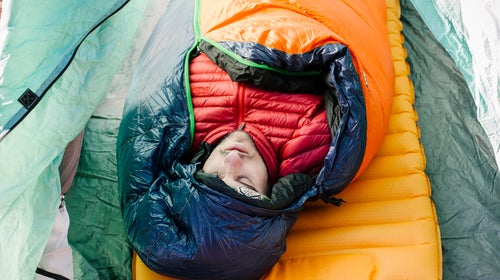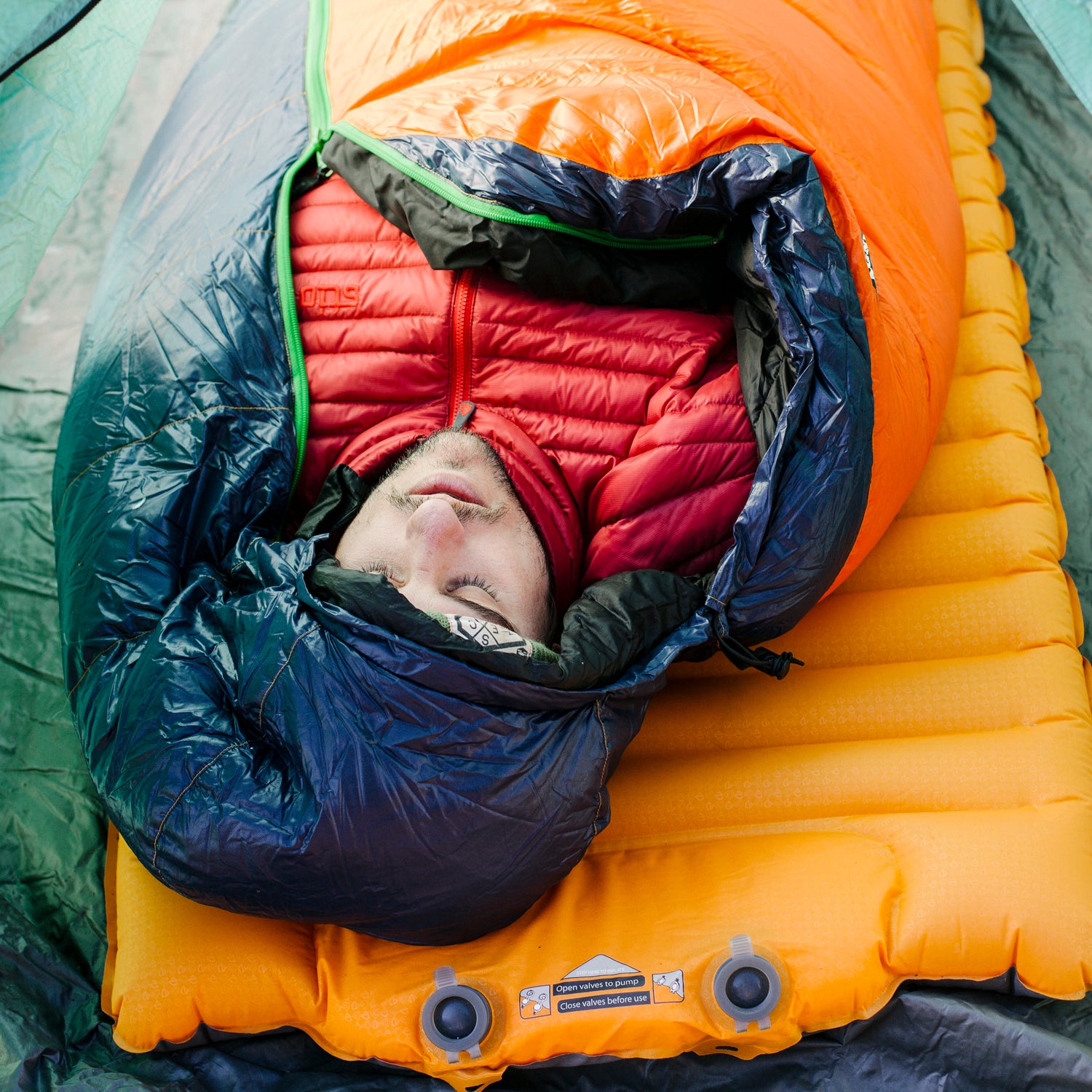When it comes to polite conversation, it’s best to avoid politics, religion, and whether you should layer up in a sleeping bag.
I have watched bickering matches break out in bars, on message boards, and on riverbanks over that last topic. The main disagreement is over how much you should wear under your sleeping bag. The camps are split: Some say you will be warmer if you sleep wearing as little as possible (with more than a few staunch advocates for sleeping completely in the buff). Others find it ridiculous to not use the jackets, pants, and base layers you already have to boost warmth.
Both sides have strong cases. The one you lean toward will ultimately depend on your outdoor experience and what time of year you typically camp. I turned to several experts with a variety of backgrounds—textiles, sleeping bag manufacturing, and real-world exploring—to get the nitty-gritty details of the argument.
The Dress-Downers
“I come into the subject with strong personal opinion. Go in cold and let the sleeping bag do its work,” says Karen Beattie, product manager at . “I have learned over the years that the biggest mistake I could make was to crawl in wearing a jacket and fall asleep like that. Invariably you wake up sweating, which makes you really cold [due to your sweat cooling on your skin], and you can’t come back from that.”
Beattie’s preference is to wear light wicking long underwear—either polyester or wool. “Even if you do sweat or get wet, those two fabrics will stay warm even if they are damp.” I recommend ($49).
If you’re expecting the weather to be colder than you think your sleeping bag can handle, Beattie suggests adding a few other next-to-skin accessories. “Wear a pair of socks and a fleece hat or beanie—your extremities and head are where a lot of heat loss will happen,” she says. For beanies and socks, I turn to the ($20) and ($20).
In the most extreme circumstances, you can bring a lightweight jacket into the bag and use it if the temperature drops well below your bag’s limit.
The Layer-Uppers
Professional explorer Eric Larsen has skied at both the North and South Poles and has been to the top of Everest. “I wouldn’t engage in any debates as to whether you should sleep naked or not. All I know is that I have never slept naked in a sleeping bag unless it has been on purpose and usually with someone else,” he says.
Larsen firmly believes in layering heavily in the cold, an opinion developed after years spent sleeping in subfreezing temps. “There is no such thing as a cold night’s sleep, only not enough layers,” he says. “I layer when I’m inside the bag just as much as I do while outside the bag. When you’re climbing Everest, you’re not naked under your down suit. The more heat you can preserve in a warm layer next to your body, the better.”
The key is adaptability. “If you start to feel cold or hot, make a change,” Larsen says. Just like layering for outside, it’s smart to wear a moisture-wicking next-to-skin layer under increasingly thick insulating layers like a fleece or down jacket. This layering style makes it easier to adjust the temperature inside the bag.
Finally, Larsen says layering goes beyond what you wear inside your sleeping bag. What’s underneath the bag matters, too. “You can be wearing a bunch of layers, but once those clothes get compressed and your sleeping bag is compressed, you are losing a ton of heat because of conduction through the ground. It’s like you have a bucket of water, and you’re trying to fill it up, but there’s a hole in the bottom,” he says. Bring a good sleeping pad, like the ($200).
The Middle-Grounders
Peter Hickner, who founded boutique down gear maker with his wife, Carol, in 1972, has sleeping bag layering down to a science. “There’s pretty much agreement that temperature ratings on sleeping bags assume that someone is wearing some long underwear,” he says. In other words, a 30-degree bag is good down to 30 degrees only if you pair it with a base layer. “In addition to that, it’s probably a good idea to start out wearing socks, which you can always kick off if you get too hot.”
Hickner agrees with Beattie about the type and fabric of base layers—breathable polyester underwear—for the whole you-don’t-want-to-overheat-then-get-cold-with-sweat reasoning.
That said, he’s more liberal than Beattie with his use of extra layers. “We actually highly encourage people to have a sleeping bag that is either barely warm enough or not warm enough, then augment it with clothes inside the sleeping bag,” Hickner says, “under the idea that if it’s cold enough that you’re using a down sleeping bag, you probably have some warm jacket with you, so why not use it?”
The Takeaway
I was previously a member of the sleep-naked camp, but now I’m firmly on Team Layering. Looking back on my coldest nights—like when I slept next to a frozen lake in the snow in the Cordillera Blanca, or the time I needed to emergency bivvy in California’s White Mountains—I didn’t strip down. And the thing that Beattie, Larsen, and Hickner all agree on? Manage your temperature so you never sweat in a sleeping bag.
With a nod to the merits of both sides (and knowing it’ll ultimately come down to what climate or conditions you’re camping in), Hickner’s “augmentation” stance is a happy medium.


